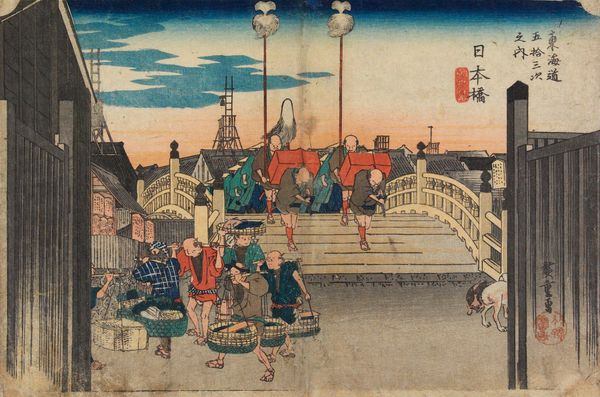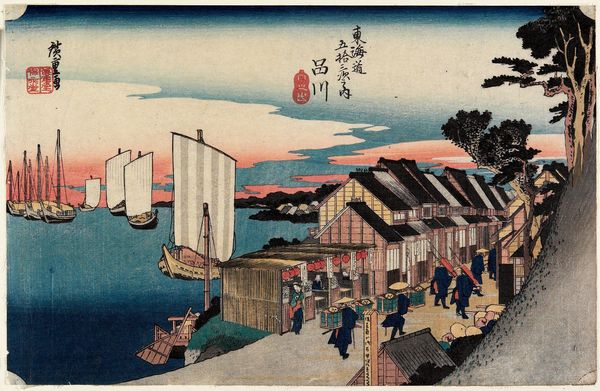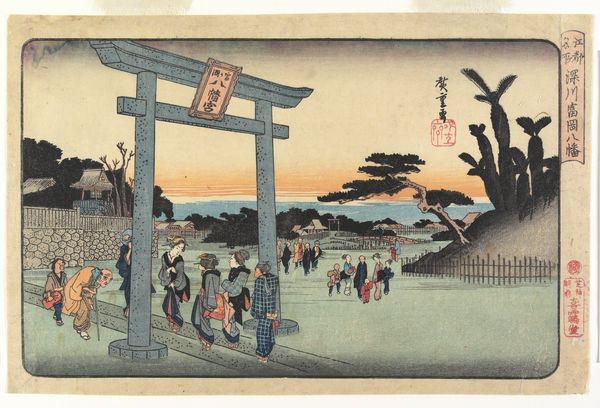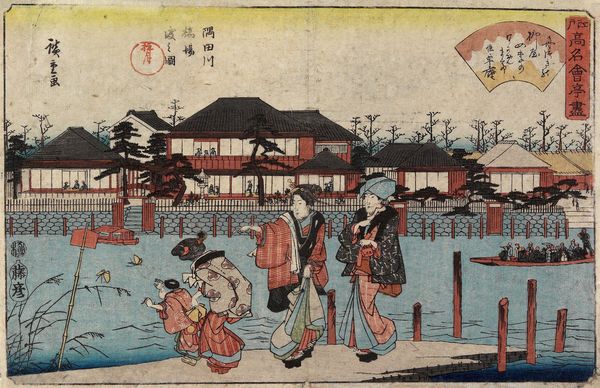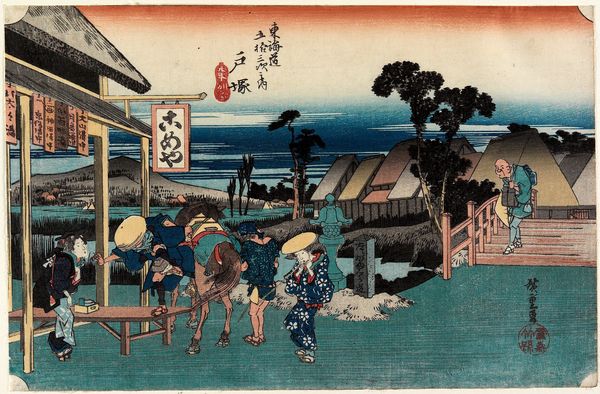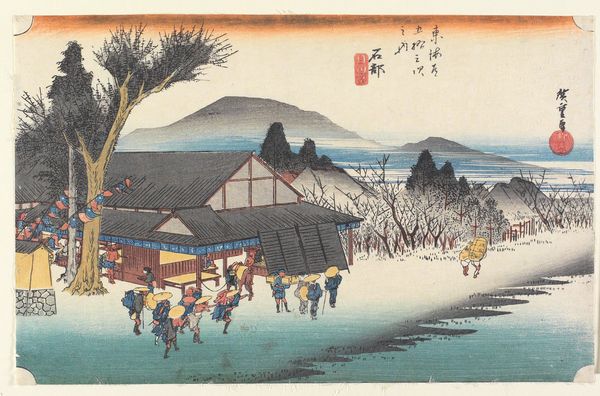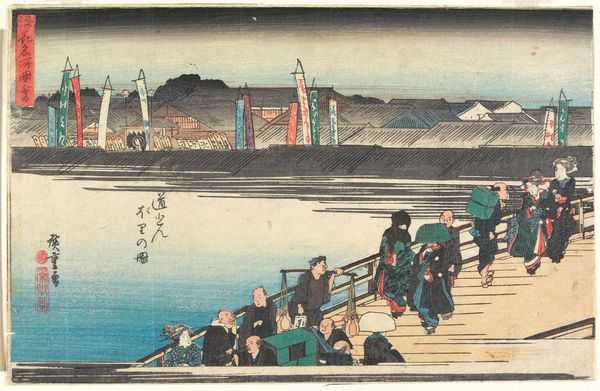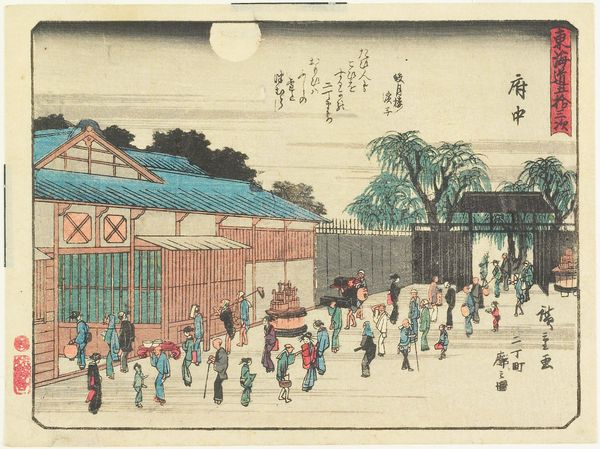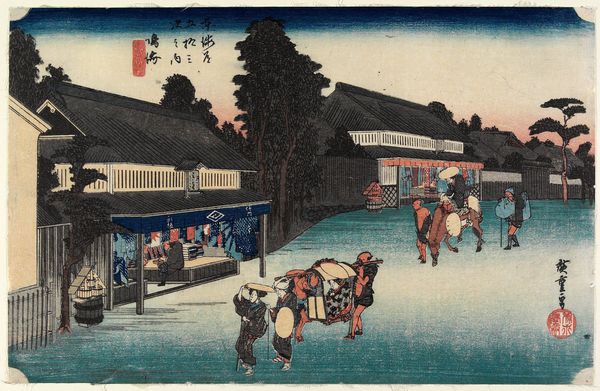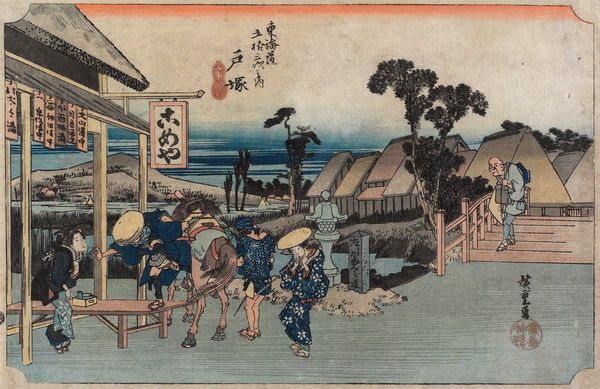
print, ink, woodblock-print
# print
#
landscape
#
ukiyo-e
#
ink
#
woodblock-print
#
cityscape
#
genre-painting
Dimensions: 8 13/16 × 13 13/16 in. (22.4 × 35.1 cm) (image, sheet, horizontal ōban)
Copyright: Public Domain
Editor: This is Utagawa Hiroshige's woodblock print, Nihonbashi, dating from around 1832. It’s incredibly dynamic! The diagonal lines create a sense of movement and the figures look so burdened. What do you make of this scene? Curator: It's vital to view this through a lens of socio-economic structures. Hiroshige is not merely depicting a quaint cityscape, but illustrating the arduous realities of labour in Edo period Japan. Consider the porters, bent under immense loads; their posture speaks volumes about class disparities and the physical demands placed upon the working class. Editor: So you're saying the image isn’t just descriptive, it's also a form of social commentary? Curator: Absolutely. And Ukiyo-e prints like this, while popular and seemingly decorative, provided a medium to portray everyday life, often hinting at the underlying tensions. Think about who this print was made for. Urban dwellers, perhaps merchants who benefited from the very system that exploited these laborers. Does the print humanize these workers, or simply exoticize their suffering for a middle-class audience? Editor: That's a really powerful point. I hadn't considered the gaze of the intended audience. The dogs almost seem to wander freely in contrast to the human figures carrying heavy loads on their shoulders. Curator: Precisely. Animals often appear as signifiers of freedom, in contrast to the structured hierarchies of human society depicted. What are your thoughts on how the artist uses space to create an inclusive/exclusive reality? Editor: Now that I think about it, the composition subtly directs our gaze to certain figures. Maybe Hiroshige is inviting us to question our own relationship to this system. This artwork opens to a more inclusive perspective. I'll consider labor rights and power when interpreting art. Curator: And that critical awareness, linking art to its socio-political roots, is how we truly unlock its meaning.
